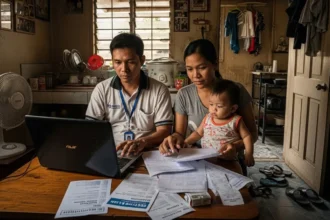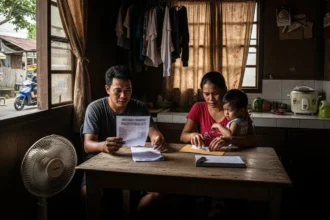📱 A Load of Change: Why This Question Matters Now
Remember when every corner had a handwritten “LOAD NA DITO” sign? When you’d text “GM” to friends because every character counted? E‑load became the everyday glue of Filipino communication – quick calls, urgent SMS, and pasaload in a pinch. But the ground has shifted. Affordable mobile data promos, fast home fiber, and e‑wallets turned loading into a tap‑and‑go habit. Sari‑sari owners say foot traffic for load has softened; younger users skip regular load in favor of app‑only bundles. This isn’t just about tech – it’s about behavior. People want convenience and predictability, not per‑text anxiety. In this piece, we map the bolded future of e‑load in the Philippines: what’s fading, what’s thriving, and how this change hits wallets, tindahan counters, and our daily routines. By the end, you’ll see why “pautang ng load” has a modern cousin: “Paki‑send na lang sa GCash.”
- 📱 A Load of Change: Why This Question Matters Now
- 📉 The Decline of Traditional E‑Load
- 💸 Promos Over Pasaload: What People Prefer Now
- 🛒 E‑Wallets & Auto‑Load: Killing the Middleman
- 🧠 Load Behavior: Then vs. Now
- 🤔 So… Will E‑Load Disappear Completely?
- 📌 Frequently Asked Questions
- 🧭 The Last Word: Shrink, Evolve, Adapt
📉 The Decline of Traditional E‑Load
Traditional e‑load thrived on micro‑margins and constant foot traffic. Today, that model strains under bundled data, in‑app purchases, and 24/7 digital top‑ups. Here’s the core of the decline, expanded so you can see the moving parts:
- Bundles beat basics: All‑in promos make per‑text/per‑minute pricing feel ancient.
- Apps replaced airtime: Direct top‑ups via GCash, Maya, and bank apps remove the middleman.
- Messaging shifted: Free chat and VoIP on Wi‑Fi/data shrink the role of regular load.
- Habit change: People load less often but in bigger, scheduled chunks.
- Margin squeeze: ₱1–₱2 per transaction can’t sustain a tindahan when buyers move to apps.
Everyday Pinoy Example: The Quiet “LOAD NA DITO” Sign
Ate Belen still keeps the sign, but buyers now come for cash‑ins, bills payment, and e‑wallet top‑ups. She sells load mostly for emergencies – late‑night power outages, SIM reactivations, or when a lola needs a quick call. The future of e‑load in the Philippines isn’t zero; it’s shrinking into niches that apps don’t fully cover yet.
What’s Really Driving the Drop
- Predictability: Weekly bundles beat the stress of monitoring pesos left.
- Perks: App‑exclusive discounts and cashback tilt the math away from the counter.
- Data‑first use: Social, work, and entertainment live on data; calls/texts hitch a ride.
- Infrastructure: More Wi‑Fi zones and better mobile coverage reduce regular load’s role.
💸 Promos Over Pasaload: What People Prefer Now
Promos are the new default. They’re simple, cheaper per GB/minute, and designed to keep you inside one telco’s world. Below are sample offers (prices and availability can vary by time and area):
Common Bundles Filipinos Choose
| Promo Name | Data/Call/Text Package | Validity | Price |
|---|---|---|---|
| GOMO No Expiry | 30GB data | No expiry | ₱488 |
| Go90 (Globe) | 8GB + 1GB/day for select apps | 7 days | ₱90 |
| Unli Data 99 (DITO) | Unlimited data | 1 day | ₱99 |
| UTP15 (Smart) | Unli text + 50 minutes calls | 1 day | ₱15 |
Why promos win:
- Cheaper per GB/minute than regular load
- Minimal hassle; fewer, larger top‑ups
- Some offer no expiry, which kills the urgency to reload
- App‑only vouchers and rewards sweeten the deal
🛒 E‑Wallets & Auto‑Load: Killing the Middleman
Apps like GCash, Maya, ShopeePay, and banking apps turned loading into a quiet background task. Instead of walking to a store, people top up during a commute, in bed, or at work.
Advantages of app‑based loading:
- 24/7 availability – even on holidays and after midnight
- Cashback, vouchers, and points you don’t get at the counter
- Auto‑load reminders/subscriptions so you never lapse
- Digital receipts and history for budgeting
Reader Scenario: Payday Ritual
Every 15th and 30th, Carlo’s GCash auto‑tops ₱299 for a data‑heavy bundle. He doesn’t think about “load” anymore; he thinks about value, uptime, and whether his apps work without hiccups. For him, the tindahan is for snacks – not load.
🧠 Load Behavior: Then vs. Now
The shift isn’t just price; it’s mindset, timing, and tools.
| Behavior | Then | Now |
| How we load | Sari‑sari store | E‑wallets, bank apps, in‑app credits |
| When we load | As needed | Scheduled, auto‑renew, payday routines |
| Why we load | Calls and SMS | Data for social, work, and entertainment |
| Budget size | ₱30–₱50 at a time | ₱100–₱300+ for longer promos |
Implication for sari‑sari stores: diversify. Add bills payment, cash‑ins/cash‑outs, parcel pickups, and even micro‑insurance – services where margins are healthier than ₱1 per transaction.
🤔 So… Will E‑Load Disappear Completely?
Short answer: No – it will shrink, not vanish. Regular e‑load remains vital for older users, rural barangays, disaster situations, and non‑smartphone setups. Urban, app‑savvy users will keep migrating to bundles and auto‑top‑ups. Expect e‑load to survive as a safety net and niche product, while the mainstream moves to data‑first habits.
📌 Frequently Asked Questions
- Is e‑load still needed in 2025?
Yes, especially in rural areas and among older users. It’s a reliable backup during outages or when apps fail, keeping basic calls and texts alive. - What’s replacing e‑load for most users?
Data‑heavy promos and in‑app top‑ups through e‑wallets are the new default. People prefer predictable bundles over piecemeal reloads. - Do sari‑sari stores still earn from e‑load?
Earnings exist but are thinner than before due to app migration. Stores that add bills payment and cash‑ins tend to offset the drop. - Is it cheaper to buy load via GCash or Maya?
Often yes, thanks to app‑only vouchers and cashback. Always compare offers because promos change by telco and timing. - Can I still pasaload in 2025?
Yes, but it’s less common because bundles offer better value. Pasaload remains useful for emergencies and small, quick top‑ups. - What happens if regular e‑load fades further?
Expect sari‑sari stores to pivot to services with better margins. Consumers will rely more on auto‑renewing bundles and direct in‑app purchases. - Is online loading safe?
It is when you use official apps and enable security features. Avoid third‑party sellers that ask for OTPs or passwords. - Will telcos completely end regular load?
Unlikely in the near term; it’s still a bridge for underserved users. But marketing will keep nudging everyone toward data‑centric bundles.
🧭 The Last Word: Shrink, Evolve, Adapt
E‑load won’t vanish tomorrow, but its center of gravity has moved. For urban users, “load” is now a background utility delivered by apps, auto‑renewals, and bundles. For sari‑sari owners, the play is to pivot: lean into cash‑ins, bills payment, parcel services, and other digital rails where margins breathe. Telcos will keep optimizing for data – pushing simplified offers that minimize friction and maximize stickiness.
The winners will be those who treat connectivity like electricity: predictable, packaged, and always on. For countryside barangays and during disasters, regular e‑load keeps its value as a low‑tech safety net. If you’re budgeting, compare the total cost per week, not just the sticker price, and favor bundles that match your real usage. For families, consider sharing data across SIMs or timing reloads on payday for better deals. In short, the future of e‑load in the Philippines is a story of selective survival: less retail airtime, more app‑driven value. The question isn’t “Will e‑load die?” – it’s “Where will it matter most, and how will you adapt?”







